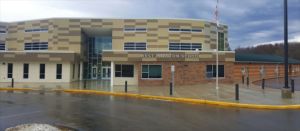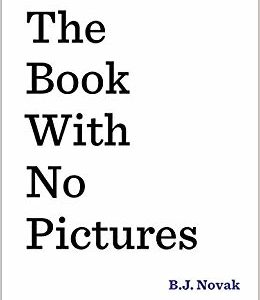As the new coronavirus spreads and cases of COVID-19 are diagnosed, Read Aloud West Virginia volunteers should continue to monitor developments and make good choices daily about whether to attend their weekly read aloud appointments.
At this writing, no West Virginia cases have been detected. However, projections by health officials suggest that it is only a matter of time. We don’t want to alarm anyone unnecessarily, but it is better to be safe than sorry. To help keep our volunteers, our schools and our communities as healthy as possible, we recommend:
1. Volunteers in the at-risk group of people — those with compromised immune systems or pre-existing lung conditions — should plan to postpone in-person reading sessions until the danger is past. Please call or text teachers to let them know. For complete details on the virus, incubation periods, and at-risk groups, see the CDC’s web site, https://www.cdc.gov/coronavirus/2019-ncov/about/index.html
2. People over age 50 are at greater risk from this virus, health officials say. Volunteers in that category should also consider their own health and conditions in their schools, and choose what is best to minimize the spread of infection. Any volunteer who is uncomfortable visiting schools or being around groups for any reason should simply call/text their teachers and postpone until further notice.
3. Readers who do choose to continue visiting schools should practice good anti-flu hygiene (frequent and thorough handwashing) before and after visits. The CDC has more details about that. https://www.cdc.gov/coronavirus/2019-ncov/about/prevention-treatment.html. The CDC and virologists say soap and water is preferred, but hand sanitizer is a good choice when soap and water is unavailable.
4. Keep distance in classrooms as much as possible. The CDC recommends keeping about six feet between people to minimize the spread of any respiratory illness. Many classes are accustomed to gathering closely on a rug or in a reading corner. If possible, discuss ahead of time with your teacher how to keep healthy by coughing and sneezing into tissues (that get thrown away) and by washing hands often, by not hugging and touching volunteers when they come into class, and by sitting farther apart at reading time.
5. Of course, if local health officials give different advice as conditions develop, or if schools or other gatherings are closed, Read Aloud volunteers will follow their directions.
Thank you for making time each week for the children in your community, and for all the other unofficial and unrecognized contributions you make to their lives. Please stay safe and healthy.






























 1. The Book with No Pictures by B.J. Novak. You may know the author better as Ryan from the TV show “The Office.” Don’t be daunted by the hilarious video online of Novak reading it to a school in New York. But be warned. Here’s a sample: “Everything the words say, the person reading the book has to say.
1. The Book with No Pictures by B.J. Novak. You may know the author better as Ryan from the TV show “The Office.” Don’t be daunted by the hilarious video online of Novak reading it to a school in New York. But be warned. Here’s a sample: “Everything the words say, the person reading the book has to say. 2. The Big Jump and Other Stories by Benjamin Elkin. This one, originally published in 1958, was recommended by Berkeley County volunteer Casey Wilson because it is one of his wife’s favorites. He read the first of the three stories in the book to a first-grade class, and then closed the book.
2. The Big Jump and Other Stories by Benjamin Elkin. This one, originally published in 1958, was recommended by Berkeley County volunteer Casey Wilson because it is one of his wife’s favorites. He read the first of the three stories in the book to a first-grade class, and then closed the book. 3. Caps for Sale by Esphyr Slobodkina. Speaking of old-timers, this folktale was first published as the beloved picture book by an avant-garde artist in 1940. It has sold millions and makes a great board book because of the repetitive language suited to small children. If you read it, though, make sure you know what monkey noise you’re going to make when the time comes.
3. Caps for Sale by Esphyr Slobodkina. Speaking of old-timers, this folktale was first published as the beloved picture book by an avant-garde artist in 1940. It has sold millions and makes a great board book because of the repetitive language suited to small children. If you read it, though, make sure you know what monkey noise you’re going to make when the time comes.
 5. Counting on Katherine: How Katherine Johnson Saved Apollo 13 by Helaine Becker and illustrated by Dow Phumiruk. This beautiful new picture book traces West Virginia’s recently discovered hero Katherine Johnson, of Greenbrier County, educated at West Virginia State University and WVU, who then worked quietly behind the scenes at NASA doing the math that made space travel possible. It’s aimed at younger students, but it has something to inform and inspire all ages.
5. Counting on Katherine: How Katherine Johnson Saved Apollo 13 by Helaine Becker and illustrated by Dow Phumiruk. This beautiful new picture book traces West Virginia’s recently discovered hero Katherine Johnson, of Greenbrier County, educated at West Virginia State University and WVU, who then worked quietly behind the scenes at NASA doing the math that made space travel possible. It’s aimed at younger students, but it has something to inform and inspire all ages.
 7. Cendrillon by Robert D. San Souci and illustrated by Brian Pinkney. This is another picture book that grows with the students. It’s the Cinderella story, so easily recognizable, but set in the French West Indies, with all the color, imagery and a peppering of French Creole language. Also, it is told from the point of view of the Fairy Godmother, or nannin’.
7. Cendrillon by Robert D. San Souci and illustrated by Brian Pinkney. This is another picture book that grows with the students. It’s the Cinderella story, so easily recognizable, but set in the French West Indies, with all the color, imagery and a peppering of French Creole language. Also, it is told from the point of view of the Fairy Godmother, or nannin’. 8. Alvin Ho: Allergic to Girls, School and Other Scary Things by Lenore Look and illustrated by LeUyen Pham. A chapter book, this features second-grader Alvin Ho, aka his superhero alter-ego Firecracker Man, who does everything you would expect, except that as soon as he steps off the bus at school he can’t talk. The characters inspire laughs and compassion in listeners. It’s not too young for third grade, where students begged for the next one in the series.
8. Alvin Ho: Allergic to Girls, School and Other Scary Things by Lenore Look and illustrated by LeUyen Pham. A chapter book, this features second-grader Alvin Ho, aka his superhero alter-ego Firecracker Man, who does everything you would expect, except that as soon as he steps off the bus at school he can’t talk. The characters inspire laughs and compassion in listeners. It’s not too young for third grade, where students begged for the next one in the series. 9. Monsters in West Virginia by Rosemary Ellen Guiley. There is something even more suspenseful about allegations of monsters and fantastic beasts just out of sight, if the places they were supposedly spotted are places you know — Grafton, Point Pleasant, Braxton County, for example. A good lure for older listeners.
9. Monsters in West Virginia by Rosemary Ellen Guiley. There is something even more suspenseful about allegations of monsters and fantastic beasts just out of sight, if the places they were supposedly spotted are places you know — Grafton, Point Pleasant, Braxton County, for example. A good lure for older listeners. 10. The Miraculous Journey of Edward Tulane by Kate DiCamillo. “I love the connections we can make between how the author explored different kinds of love, friendship, family love, betrayal, all of these rich ideas and plot twists and things that we can look at together when we read those books,” said Christy Schwartz, literacy specialist with the West Virginia Department of Education’s Campaign for Grade Level Reading.
10. The Miraculous Journey of Edward Tulane by Kate DiCamillo. “I love the connections we can make between how the author explored different kinds of love, friendship, family love, betrayal, all of these rich ideas and plot twists and things that we can look at together when we read those books,” said Christy Schwartz, literacy specialist with the West Virginia Department of Education’s Campaign for Grade Level Reading.